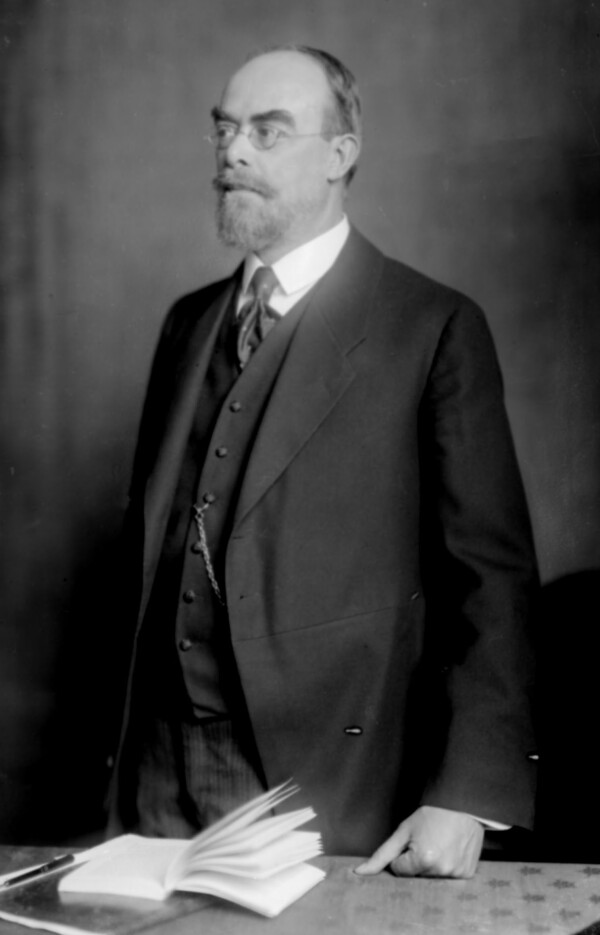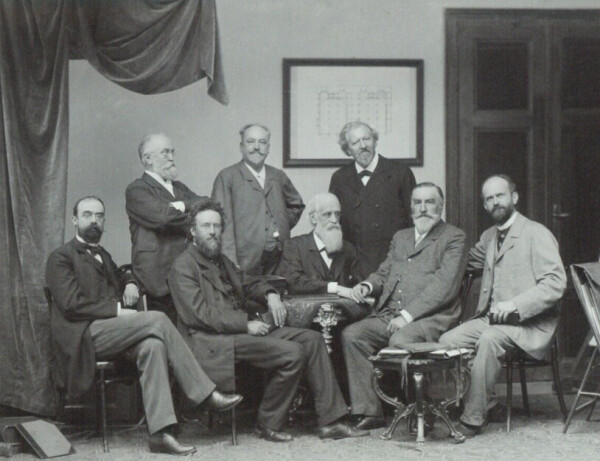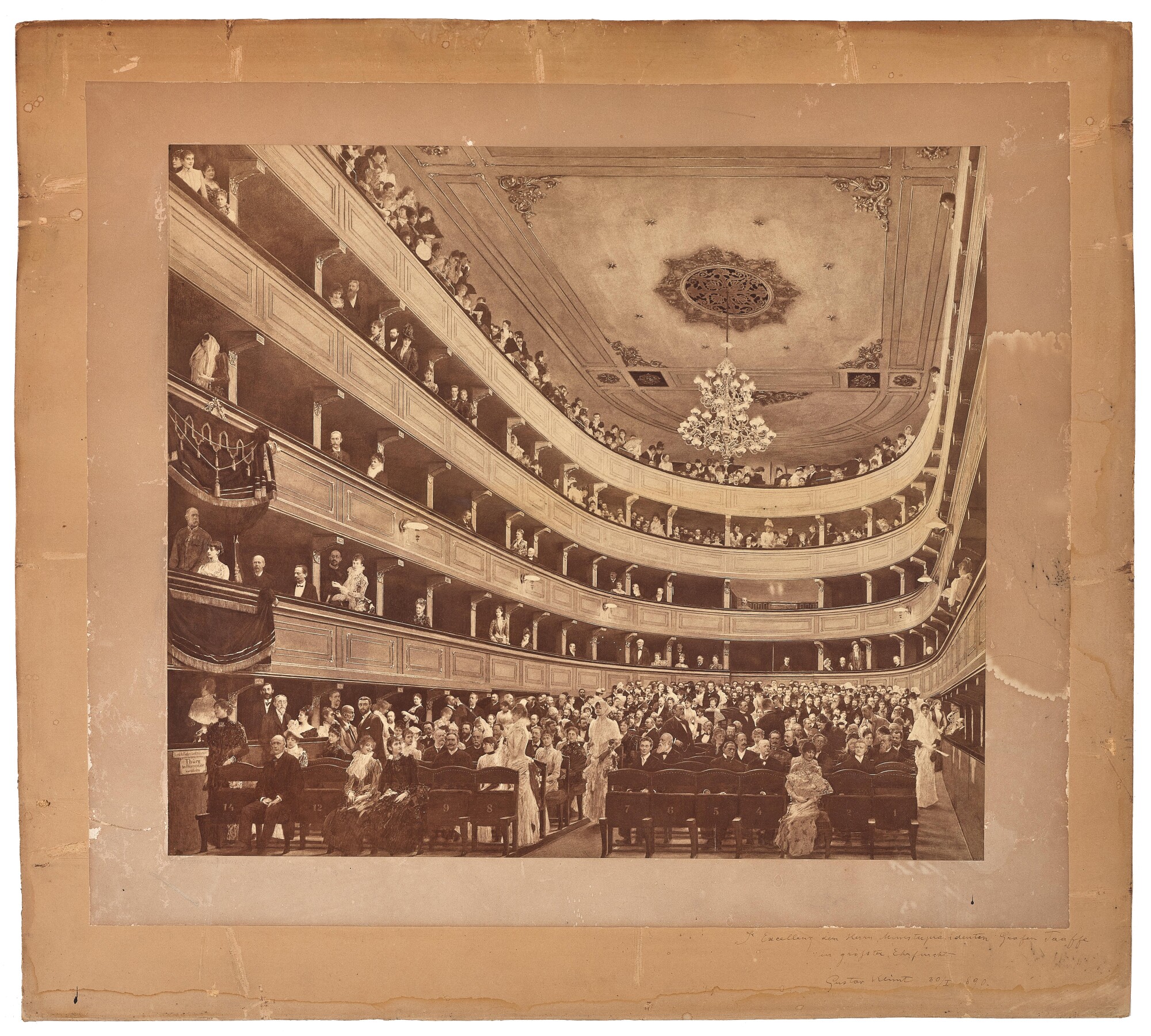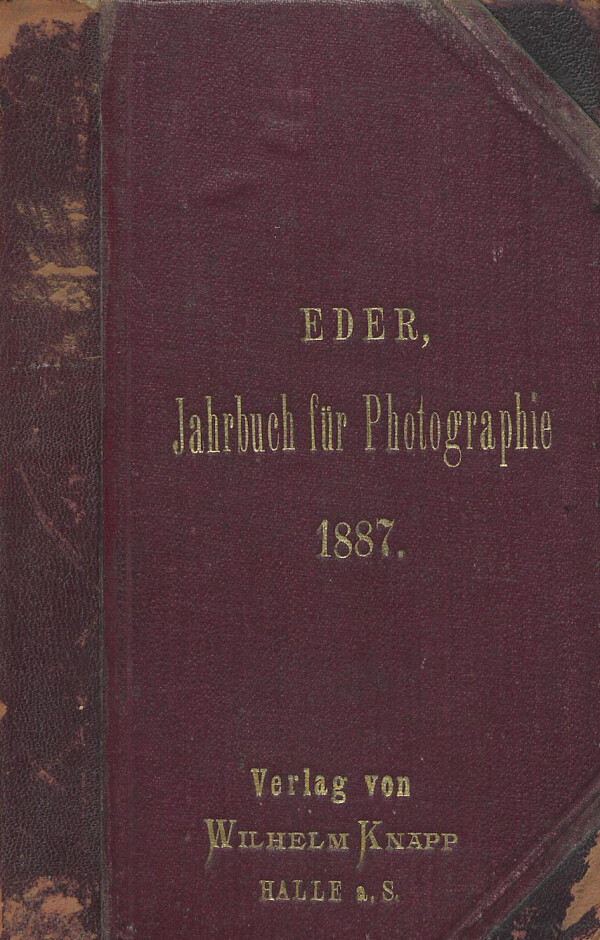Josef Maria Eder

Josef Maria Eder photographed by Madame d'Ora, 1915, Austrian National Library, Vienna
© Picture Archives and Graphics Department, Austrian National Library

Josef Maria Eder with fellow professors at the Technical University, 1896
© The ALBERTINA Museum, Vienna
Josef Maria Eder achieved world fame with his research into the use of photography in science and as an Austrian photochemist. As head of the Imperial-Royal Teaching and Research Institute for Photography and Reproduction Processes, he also promoted artistic photography.
Josef Maria Eder was born in Krems in Lower Austria on 16 March 1855, the son of Josef Eder, a provincial court clerk. He attended the Piaristengymnasium, a grammar school in his native town, and then went to Vienna, where he took up his studies in chemistry and physics at the University of Vienna in 1872. Among his professors were Ludwig Boltzmann, Wilhelm Exner, and Eduard Suess. After receiving his doctorate, he switched to the University of Technology, where he was appointed assistant professor in 1879. In 1880, Eder wrote his habilitation thesis on the chemical effects of light.
Establishment of the Graphic Arts Teaching and Research Institute
After his postdoctoral habilitation Eder was appointed professor of chemistry at the State Trade School in Vienna in 1882. He worked extensively on the spectral analysis of three-color printing and in 1884 wrote the Ausführliches Handbuch der Photographie [“Comprehensive Manual on Photography”]. In 1892 he was appointed associate professor of photochemistry at the University of Technology. In 1902 he became a full professor and taught there until 1925. As a member and future president of the Photographic Society, Eder worked with his brother-in-law, Viktor von Tóth, to establish the Imperial-Royal Teaching and Research Institute for Photography and Reproduction Processes in Vienna (now Höhere Graphische Bundes-Lehr- und Versuchsanstalt). It was the first institution of its kind in the world, combining the teaching of the chemical processes of photography with their applications in art, industry, and science. Eder ran the institute until 1922 alongside his other activities as a professor.
Photogravure as a Process in Artistic Printmaking
Eder had already written about the photogravure process in 1882 in his treatise Über Heliogravüre in Strichmanier und in Halbtönen [“On Photogravure Using Stippling and Halftoning”]. The method was developed and perfected under his direction at the Imperial-Royal Teaching and Research Institute for Photography and Reproduction Processes. It allowed the production of halftone imagery and was thus the forerunner of color photography. The possibility of reproducing color gradations in a more systematic manner was primarily used in the field of art. Numerous reproductions of works of art were created, including Klimt’s paintings.

Gustav Klimt: Dedication by Gustav Klimt to Eduard Taaffe on a heliogravure of the painting "Auditorium in the Old Burgtheater", 01/30/1890, Verbleib unbekannt
© Dorotheum Vienna, Auction catalog 09.06.2021

Josef Maria Eder: Yearbook for Photography, 1887
© Heidelberg University Library
A reproduction of Klimt’s prize-winning gouache Auditorium of the Old Burgtheater (1888, Wien Museum, Vienna) was produced as early as 1890. From 1908 to 1914, several portfolios including prints of Klimt’s paintings were published, first by H. O. Miethke and later by Hugo Heller. Photogravure was used for these publications in addition to collotype and autotype.
Photography and Science
Josef Maria Eder is considered the initiator of scientific research into photography. Numerous developments and photographic processes go back to his research, including the development of the silver gelatin dry plate process instead of the collodion wet plate process, and the introduction of silver chlorobromide emulsions in the copying process. In addition to developing new photographic techniques, he also actively promoted young artistic photographers. Anton Trčka, for example, probably owed his acquaintance with Klimt, for whom he produced a series of portrait photographs, to a letter of recommendation from Eder.
From 1887 to 1931, Eder published the Jahrbuch für Photographie und Reproduktionstechnik [“Annual for Photography and Reproduction Technique”]. He was a member of the Academy of Sciences; his works on photochemistry, spectral analysis, and X-ray photography found international recognition. The further development of photography and cinematography was based on his inventions. His studies on X-ray photography are of particular importance for medical diagnostics.
Joseph Maria Eder received multiple awards and honors. He died in Kitzbühel on 18 October 1944 and has his final resting place there in a grave of honor.
Literature and sources
- Österreichisches Biographisches Lexikon. Josef Maria Eder. www.biographien.ac.at/oebl/oebl_E/Eder_Josef-Maria_1855_1944.xml (04/10/2020).
- Agnes Husslein-Arco, Alfred Weidinger (Hg.): Gustav Klimt 150 Jahre, Ausst.-Kat., Upper Belvedere (Vienna), 13.07.2012–27.01.2013, Vienna 2012, S. 341.
- Agnes Husslein-Arco, Alfred Weidinger (Hg.): Klimt & Emilie Flöge. Fotografien, Vienna 2012, S. 17.
- Uwe Schlögl: Klimt in Zeitgenössischen Fotografien, in: Tobias G. Natter, Franz Smola, Peter Weinhäupl (Hg.): Klimt persönlich. Bilder – Briefe – Einblicke, Ausst.-Kat., Leopold Museum (Vienna), 24.02.2012–27.08.2012, Vienna 2012, S. 84-97.
- Anna Auer (Hg.): Übersee / Exodus from Austria. Flucht und Emigration österreichischer Fotografen 1920-1940 / Emigration of Austrian photographers 1920-1940., Ausst.-Kat., Kunsthalle Vienna (Vienna), 16.01.1998–15.03.1998, Vienna 1997, S. 84-91.
- Salzburger Volksblatt: unabh. Tageszeitung f. Stadt u. Land Salzburg, 14.03.1940, S. 4.
- Buchdrucker-Zeitung, 19.05.1892, S. 200.
- Deutsche Biographie. Josef Maria Eder. www.deutsche-biographie.de/ppn118687824.html (11/08/2022).

